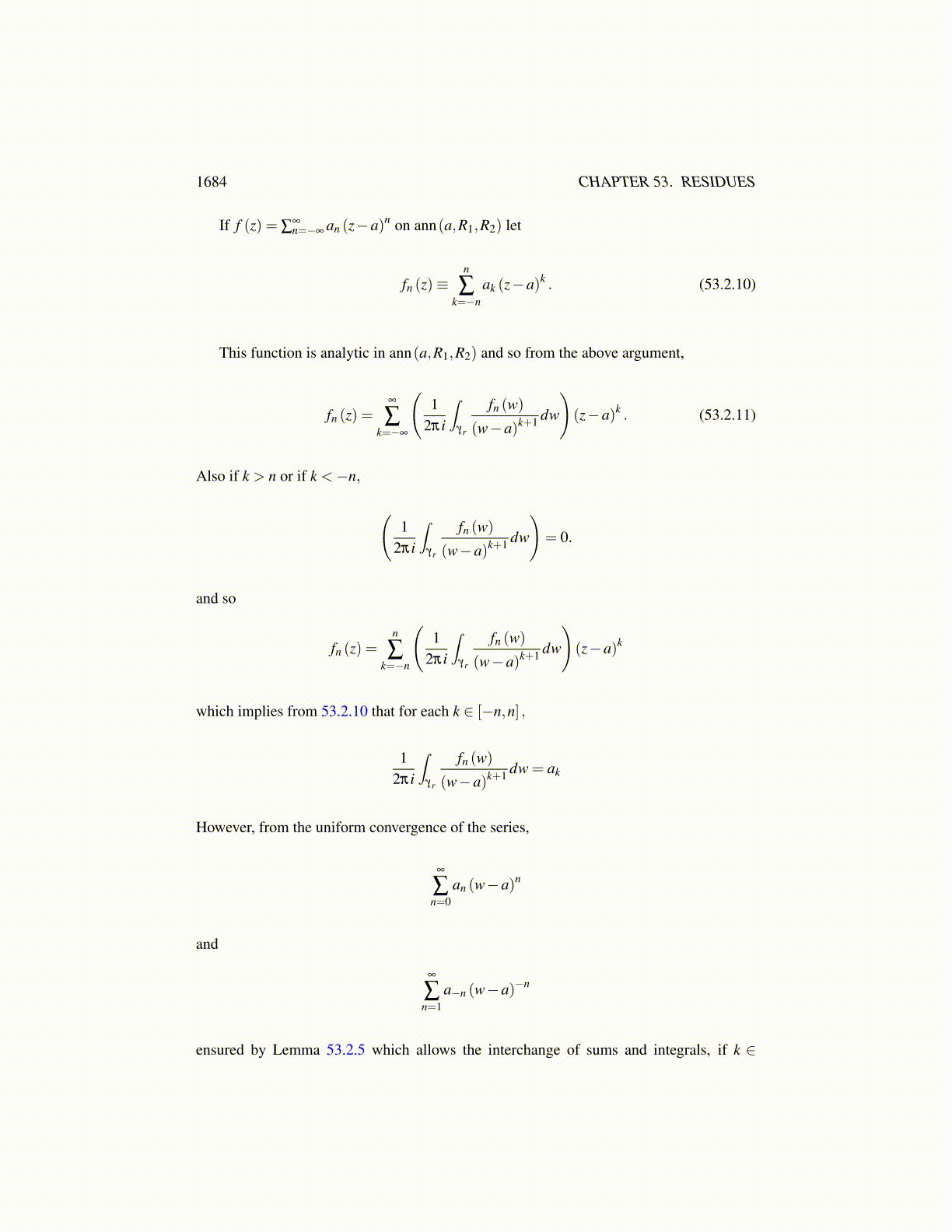
1684 CHAPTER 53. RESIDUES
Proof: Let R1 < |w−a|= r1−δ < r1. Then ∑∞n=1 a−n (w−a)−n converges and so
limn→∞|a−n| |w−a|−n = lim
n→∞|a−n|(r1−δ )−n = 0
which implies that for all n sufficiently large,
|a−n|(r1−δ )−n < 1.
Therefore,
∞
∑n=1|a−n| |z−a|−n =
∞
∑n=1|a−n|(r1−δ )−n (r1−δ )n |z−a|−n .
Now for |z−a| ≥ r1,
|z−a|−n ≤ 1rn
1
and so for all sufficiently large n
|a−n| |z−a|−n ≤ (r1−δ )n
rn1
.
Therefore, by the Weierstrass M test, the series, ∑∞n=1 a−n (z−a)−n converges absolutely
and uniformly on the set{z ∈ C : |z−a| ≥ r1} .
Similar reasoning shows the series, ∑∞n=0 an (z−a)n converges uniformly on the set
{z ∈ C : |z−a| ≤ r2} .
This proves the Lemma.
Theorem 53.2.6 Let f be analytic on ann(a,R1,R2) . Then there exist numbers, an ∈ Csuch that for all z ∈ ann(a,R1,R2) ,
f (z) =∞
∑n=−∞
an (z−a)n , (53.2.5)
where the series converges absolutely and uniformly on ann(a,r1,r2) whenever R1 < r1 <r2 < R2. Also
an =1
2πi
∫γ
f (w)
(w−a)n+1 dw (53.2.6)
where γ (t) = a+ reit , t ∈ [0,2π] for any r ∈ (R1,R2) . Furthermore the series is unique inthe sense that if 53.2.5 holds for z ∈ ann(a,R1,R2) , then an is given in 53.2.6.
Proof: Let R1 < r1 < r2 < R2 and define γ1 (t) ≡ a + (r1− ε)eit and γ2 (t) ≡ a +(r2 + ε)eit for t ∈ [0,2π] and ε chosen small enough that R1 < r1− ε < r2 + ε < R2.